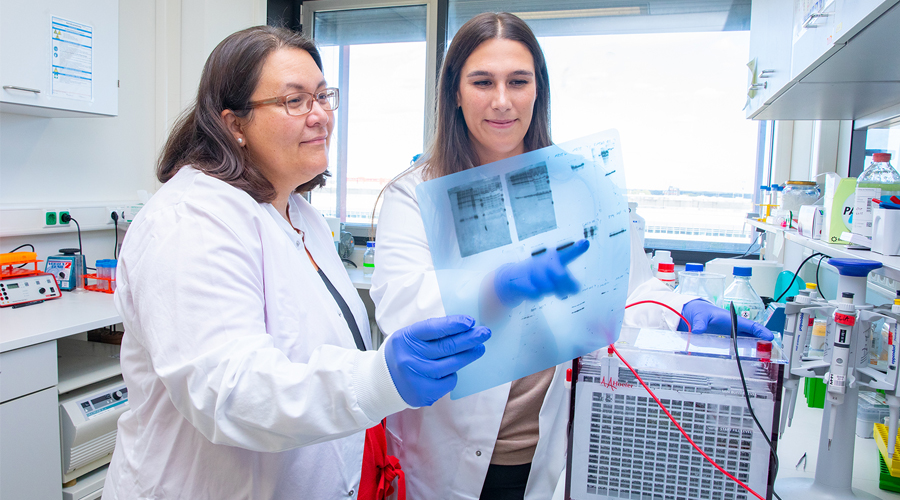New research on the multiplication of adenoviruses:
Inflammation of the gastrointestinal tract and conjunctiva, but also of the liver, brain, urinary tract and lungs – the list of diseases that an infection with human adenoviruses can cause is long. In addition, the viruses are common worldwide, these infections are becoming more frequent and can also become latent. Then they persist in the cells, temporarily have no detectable effect, but can reactivate again.
In healthy adults, adenovirus infections usually proceed without symptoms or with mild symptoms. But in people with a weakened immune system, they can become life-threatening and not infrequently fatal. There are also certain types of adenoviruses that can lead to life-threatening pneumonia even in healthy people. So far, there are neither specific antiviral therapies nor vaccination for the general population.
In the search for antiviral therapy approaches, the interdisciplinary team of Prof. Dr. Sabrina Schreiner from the Institute of Virology at the MHH – led by Dr. Julia Mai – has now been able to show that certain factors in the cells of various human tissues are decisive in determining whether the viruses multiply there or not. The team includes researchers from the Technical University of Munich and the “Hannover-Glasgow Infection Strategy” (HAGIS) project of the RESIST Cluster of Excellence and the “MRC-University of Glasgow Centre for Virus Research”. The results were published in the scientific journal Microbiology Spectrum.
In their research, the team investigated the suspicion that the so-called PML core bodies in human cells very likely counteract the multiplication of adenoviruses. The main component of the PML core bodies is the so-called PML protein, which is produced by the human cell in six different variants. Most studies to date have examined the extent to which all PML variants act together on virus replication. “We have now examined what role the six individual PML variants play during adenovirus infection – and in different tissues and cell types,” explains Prof. Schreiner. To do this, the team created cell lines from lung and liver tissue, each producing only one of the six PML variants. “In this way, we were able to identify exactly those PML variants in different tissues and cell types whose core corpuscles can suppress the infection,” continues Dr. Mai.
Based on the results of this study and through the better understanding of the host’s own defence mechanisms, new treatment options against human adenoviruses can now be further developed within the RESIST Cluster of Excellence.
Consiliary laboratory for adenoviruses
The German consiliary laboratory for adenoviruses is located at the Institute of Virology of the MHH, led by PD Dr. A. Heim. Here, all human adenovirus types can be detected, genomically sequenced and quantified in clinical samples. This plays a role in the diagnosis of life-threatening infections in immunosuppressed patients, especially in children after bone marrow transplantation. The laboratory team is also available to answer questions that go beyond the routine, and it provides cell cultures to support researchers in their work. Collaboration in epidemiological studies and advice on requirements for the study material and shipping conditions are also part of the repertoire.
The photo shows Prof. Schreiner (left) and Dr. Mai. They are standing in front of a “wet tank” with which they perform the “Western blot procedure” to detect proteins with specific antibodies. The proteins can then be visualised on X-ray films. Copyright: Karin Kaiser / MHH.

